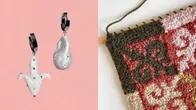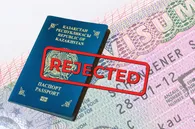Started on September 4, archaeological excavations in the Saraishyq settlement have revealed sacred items and walls of houses dating back to the Middle Ages, QazMonitor reports citing AtyrauPress.
"During the archaeological excavations, walls of medieval houses, tandoor ovens, ceramic dishes, bone objects, and medieval coins were found. As of today, the excavations are taking place in an area of approximately 800 square meters. In addition to the Atyrau Regional Museum of Local History staff, the expedition includes village residents registered as unemployed. In total, there are 30 people, and their numbers are expected to increase in the future. So far, no scientific conclusions were drawn regarding the discovered artifacts," said a researcher at the Atyrau Regional Museum of Local History, Yerlan Tilekkabylov.
Excavations are being conducted on the upper layers of the ancient city, which belong to the times of the Kazakh and Nogai Khanates' rule. The work is carried out manually, with no machinery, as every centimeter holds valuable items.
Saraishyq is an invaluable discovery for archaeologists and historians. Among the artifacts found are everyday objects, coins, and entire structures. At different times, it housed the residences of seven rulers. During the reign of Kasym Khan, the city became the capital of the Kazakh Khanate, marking the establishment of Kazakh state borders.
Archaeologists began showing interest in Saraishyq as far back as the 1940s, but comprehensive research of the historical site only started in recent decades. Earlier, more than a thousand artifacts had been discovered in Saraishyq, along with the Khan's mausoleum where Kasym Khan was buried. The site currently accommodates a unique Khan Ordaly Saraishyq reserve-museum.










